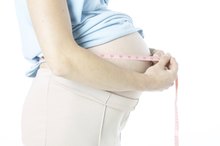What Are the Dangers of Uterine Fibroids?
Uterine fibroids are noncancerous growths that appear in the uterus 2. They are composed of muscle and other tissue. Fibroids are very common in women of child-bearing age and tend to disappear or shrink after menopause. Women with uterine fibroids generally have no symptoms and seldom require medical care 23. Treatment becomes necessary when complications occur.
Infertility
The Mayo Clinic suggests that certain factors such as size, number and location of the fibroids determine the extent of the complications 12. Fibroids can also distort the uterine cavity, causing potential problems 2. Women with uterine fibroids may experience infertility 2. Uterine fibroids may distort or block the fallopian tubes or hinder sperm from passing through the cervix to the fallopian tubes 2. Implantation and growth of the embryo may be impeded with fibroids.
Pregnancy Concerns
Abnormal Bleeding After a D&C
Learn More
Uterine fibroids during pregnancy have been associated with repeated miscarriages, the dangers of early labor, abnormal fetal position, and displacement of the placenta from the uterine wall 2. The Mayo Clinic reports that uterine fibroids occurring in the first trimester in pregnancy may increase or decrease in size, but they generally stay the same 12.
Menstrual Problems
Uterine fibroids may cause excessive menstrual flow resulting in a low blood count called anemia 2. The bleeding may become so profuse that medical treatment is necessary. Bleeding may also occur between periods and could be painful.
Pelvic Pain
Signs of Fibroid Degeneration
Learn More
Uterine fibroids may cause pelvic pain during sex and pain in the lower back 2. The fibroids can grow outside of the uterus in a stalk-like projection. If the fibroid is twisted, a sudden sharp pain occurs in the lower abdomen. The Mayo Clinic recommends obtaining medical care, as this can be potentially dangerous requiring surgical intervention.
- Uterine fibroids may cause pelvic pain during sex and pain in the lower back 2.
- The fibroids can grow outside of the uterus in a stalk-like projection.
Hysterectomy
One permanent treatment option for fibroids is a hysterectomy, the surgical removal of the uterus or womb. Once removed, a woman can't become pregnant afterward. There are some minor complications that may ensue after a hysterectomy, reports the University of Maryland Medical Center 3. Half of the women having a hysterectomy develop minor urinary tract infections. Mild pain and light vaginal bleeding are also associated with this surgical procedure. More serious, potentially dangerous complications after a hysterectomy are uncommon but can include an infection and blood clots.
- One permanent treatment option for fibroids is a hysterectomy, the surgical removal of the uterus or womb.
Related Articles
References
- Mayo Clinic: Uterine Fibroids:Complications
- Mayo Clinic: Uterine Fibroids
- de la Cruz MS, Buchannan EM. Uterine fibroids: Diagnosis and treatment. Am Fam Physician. 2017 Jan 15;95(2):100-107.
- Gurusamy KS, Vaughan J, Fraser IS, Best LM, Richards T. Medical therapies for uterine fibroids - a systematic review and network meta-analysis of randomised controlled trials. PLoS ONE. 2016;11(2):e0149631. doi:10.1371/journal.pone.0149631
- Donnez J, Dolmans MM. Uterine fibroid management: from the present to the future. Hum Reprod Update. 2016;22(6):665–686. doi:10.1093/humupd/dmw023
- National Institute of Child Health and Human Development. Uterine Fibroids.
- The Merck Manuals Online Medical Library. Uterine Fibroids.
- U.S. Department of Health and Human Services. Uterine Fibroids fact sheet.
- Lippman, SA et al. Uterine Fibroids and Gynecologic Pain Symptoms in a Population-Based Study. Fertility and Sterility. 2003 Dec;80(6):1488-94
Writer Bio
Elizabeth Hamilton has been employed as a licensed practical nurse for more than a decade in various medical settings. She has written articles appearing on LIVESTRONG and eHow.com. Her vast knowledge and passion for medicine are incorporated into the articles she writes.








